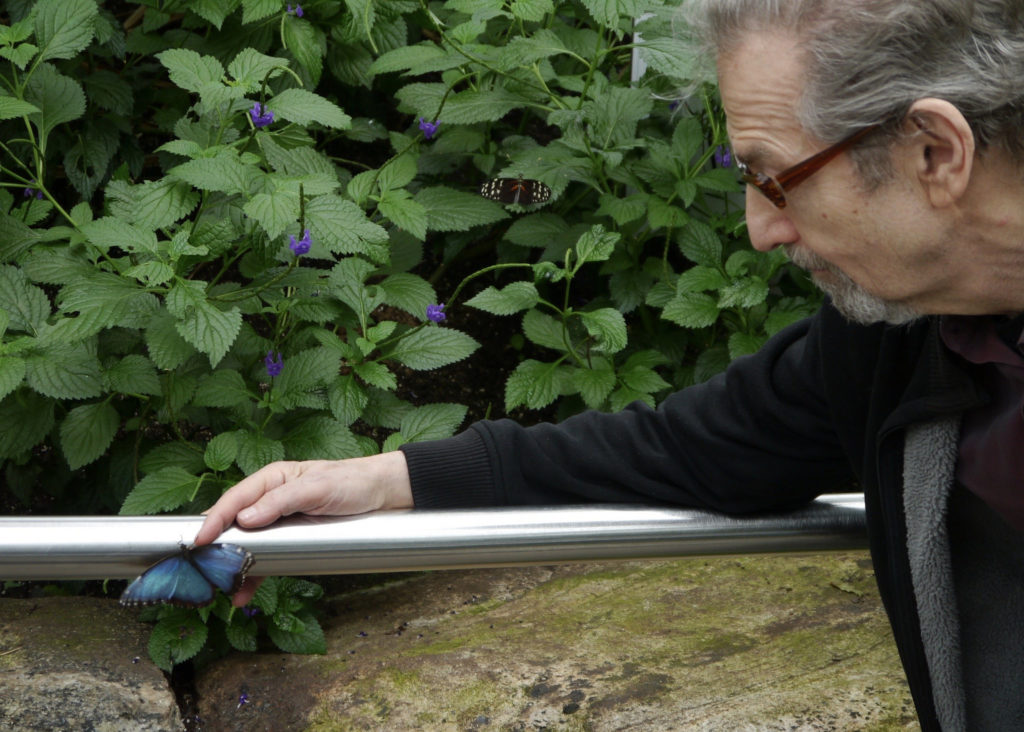Empathy is “the ability to understand and share the feelings of another.” I learned about the origin of this word in this Brain Pickings article. To summarize, the word empathy came into being in the late 1860’s when philosopher Theodor Lipps wondered why art affects us so powerfully. He hypothesized that the impact of a piece of art isn’t in the work itself but rather is found in the act of viewing. This was a radical notion at the time.
“The moment a viewer recognizes a painting as beautiful, it transforms from an object into a work of art. The act of looking, then, becomes a creative process, and the viewer becomes the artist.” ~ Rachel Corbett, You Must Change Your Life: The Story of Rainer Maria Rilke and Auguste Rodin
Lipps discovered that the process of projecting emotions, ideas or memories onto objects enacts empathy. He called this process “inseeing” — where when you consciously observe something, you go beyond the surface of a thing to its heart. You feel into it. This feeling manifests in different ways. It could be a resonance or vibration throughout the body. It could feel like a punch in the gut or a tug at the heart.
“The act of observation was not one of passive absorption, but of lived recognition.” ~ Rachel Corbett
We experience inseeing when our attention is drawn to something in particular. Our own lived experiences are activated in the process. Lipps outlines four types of empathy, depicted below through my own photographs.
The 4 Types (Lipps)
1. General apperceptive empathy: when one sees movement in everyday objects.

Sweeping lines suggest movement, even though the scene is static.
2. Empirical empathy: when one sees human qualities in the nonhuman.

Arms reaching out.
3. Mood empathy: when one attributes emotional states to colours and music, like “cheerful yellow.”

I call this happy/sad.
4. Sensible appearance empathy: when gestures or movements convey internal feelings.

The arm gently resting and the man’s expression suggests gentle tenderness and care.
Try finding the four types in your own photographs.
** Books mentioned have Amazon affiliate links, meaning I make a few cents if you purchase through my link. I only recommend books that I’ve read.
Further Reading: Empathy Library
This is interesting, Kim. I will look out these four types in my own photography!
I might say that stillness is also a form of general apperceptive empathy, as when a photograph is SO static in the natural world that movement is apparent in its absence. As one of three “judges” in a festival photo contest, we were drawn back for a second look at a beach scene that we had passed over for its “flaw” of having the lone beach umbrella “dead center”. This time, we unanimously gave it a ribbon!
When I am tempted to feel my work is “not quite up to par”, I’ll try to remember that four of my pieces edited just this week –from one photowalk– have at least one of these four empathy attributes… two of them more than one type of empathy.
This is comforting.
We need to remember to acknowledge our successes, if not celebrate them!
~Wayne
Thanks for your thoughtful response, Wayne. I find your point about stillness to be so interesting, “when a photograph is SO static that movement is apparent in its absence.” For me, stillness often evokes mood empathy. I’m heartened to know that the judges in a photo contest took this empathy into consideration, despite the breaking of conventional rules. Some of the best and most loved photographs are not the best technically. They have something else.